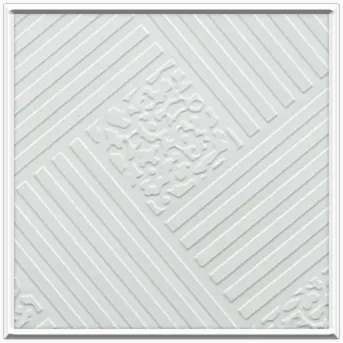Dec . 19, 2024 18:53 Back to list
t bar ceiling wire
Understanding T-Bar Ceiling Wire An Essential Component in Suspended Ceiling Systems
When it comes to constructing modern interiors, suspended ceilings, often referred to as drop ceilings, play an essential role in both aesthetics and functionality. T-bar ceiling wire is a crucial component of this system, helping to create a stable framework that supports the ceiling tiles, light fixtures, and other elements in commercial and residential spaces. This article will delve into T-bar ceiling wire, its importance, and its application in various settings.
What is T-Bar Ceiling Wire?
T-bar ceiling wire, also known as ceiling grid wire or suspension wire, is a specifically designed wire used to suspend T-bar grids from the structural ceiling above. The T-bar grid is made up of metal tracks shaped like the letter 'T', which forms a framework to hold ceiling tiles in place. The ceiling wire attaches these T-bars to the ceiling joists or other structural supports, allowing for a flexible and adjustable installation.
Importance of T-Bar Ceiling Wire
1. Structural Support The primary function of T-bar ceiling wire is to support the grid system. It ensures that the T-bars remain level and secure, preventing sagging and maintaining a uniform appearance. This is particularly important in large spaces where the ceiling could be subject to various loads and potential shifts.
2. Ease of Installation T-bar ceiling wire significantly simplifies the installation process of suspended ceilings. The wires can be easily adjusted to achieve the desired height, making it convenient for installers to create perfectly aligned grids.
3. Versatility This type of wire is versatile and can be used in different applications. Whether in offices, retail spaces, or homes, T-bar ceiling wire can accommodate varying design preferences and functional requirements. It is adaptable for different ceiling heights and architectural designs.
4. Aesthetic Appeal A well-installed T-bar ceiling system, supported by appropriate wiring, can contribute to a clean and modern look in any space. It allows for the concealment of ductwork, pipes, and electrical systems, providing a polished finish while improving overall aesthetics.
Applications of T-Bar Ceiling Wire
t bar ceiling wire

T-bar ceiling wires find their applications in various settings. In commercial environments, such as offices, retail stores, and schools, they provide flexibility for changing layouts and easy access to utilities. This is particularly beneficial for businesses that require frequent modifications or upgrades to their infrastructure.
In residential spaces, suspended ceilings equipped with T-bar systems can fulfill both functional and decorative purposes. Homeowners often use these systems to improve acoustics, conceal wiring, and enhance the overall design of rooms. Moreover, suspended ceilings can accommodate recessed lighting, making them a popular choice for modern homes.
Installation Best Practices
To ensure the longevity and effectiveness of T-bar ceiling wire installations, consider the following best practices
1. Use Quality Materials Always opt for high-quality suspension wires to prevent breakage or sagging. Look for wires with appropriate weight ratings to match the expected loads.
2. Follow Local Building Codes Adhere to local building regulations and codes during installation to ensure safety and compliance.
3. Regular Inspections Conduct periodic inspections of the suspended ceiling system to identify any signs of wear or stress on the cable assemblies, ensuring timely maintenance and repairs.
Conclusion
In conclusion, T-bar ceiling wire is a fundamental component of suspended ceiling systems, providing necessary support and versatility for various applications. Its importance in modern construction cannot be overstated, as it not only ensures structural integrity but also enhances aesthetic appeal. Whether in commercial or residential spaces, understanding and effectively utilizing T-bar ceiling wire can significantly contribute to the quality and functionality of indoor environments.
-
Quality Ceiling Trap Doors & Access Panels | Easy & Secure AccessNewsAug.30,2025
-
Durable Ceiling T Grid Systems | Easy InstallationNewsAug.29,2025
-
PVC Gypsum Ceiling: Durable, Laminated Tiles for Modern SpacesNewsAug.28,2025
-
Pvc Gypsum Ceiling Is DurableNewsAug.21,2025
-
Mineral Fiber Board Is DurableNewsAug.21,2025
-
Ceiling Tile Clip Reusable DesignNewsAug.21,2025







